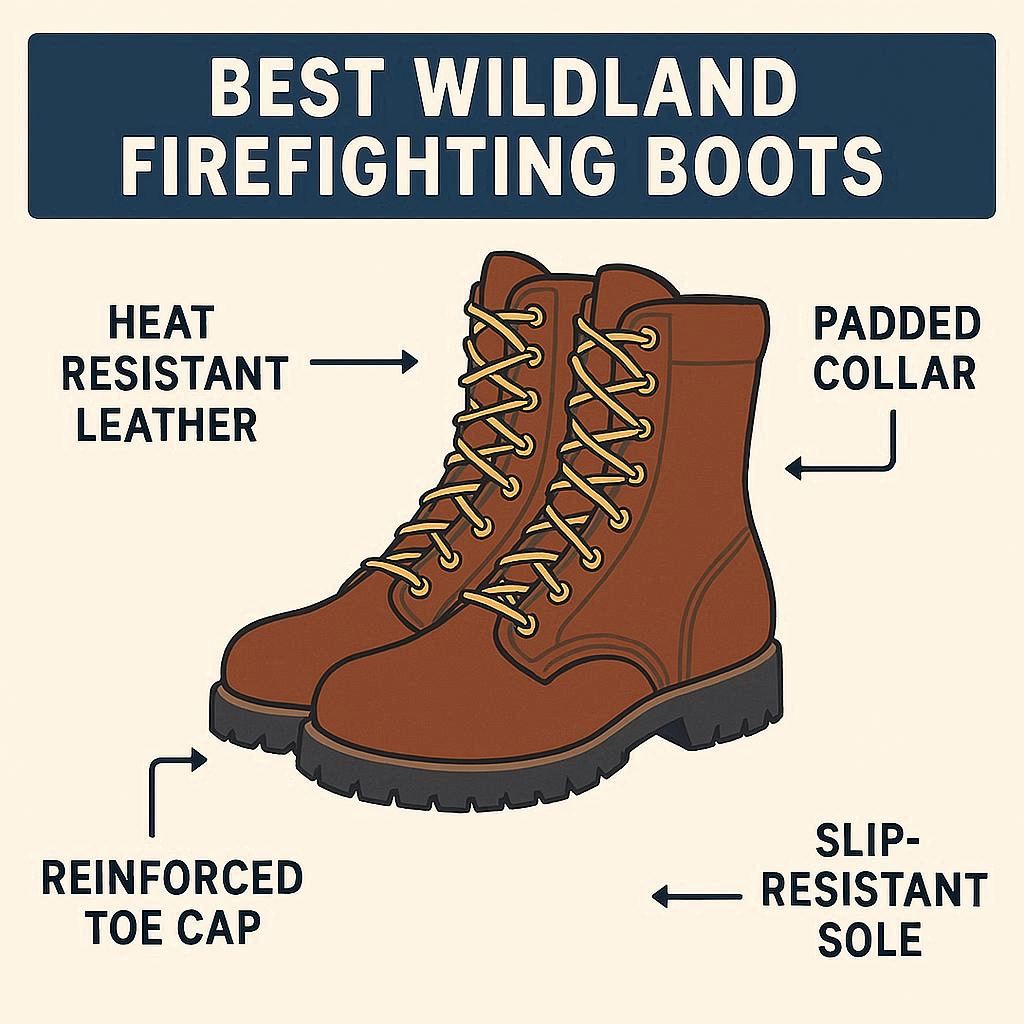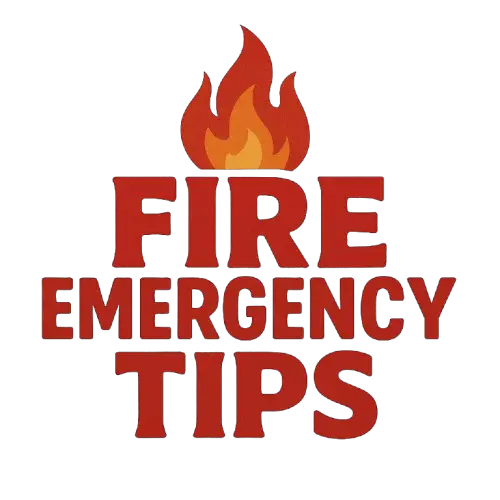
When it comes to tackling the rugged terrain and intense heat of wildland firefighting, having the right boots is crucial. As a seasoned wildland firefighter, I know the importance of reliable footwear that can withstand the toughest conditions. In this guide, I’ll walk you through the top 8 wildland firefighting boots, ensuring you’re well-equipped for whatever challenges come your way.
From superior traction to heat-resistant materials, these boots are designed to keep you safe and comfortable during long hours on the fire line. As I share my insights on each boot, you’ll discover the features that set them apart and why they’ve made it to the top of the list. Whether you’re a seasoned pro or just starting out in the world of wildland firefighting, choosing the right boots is a decision that can make all the difference in your performance and safety.
What You Need to Know About Wildland Firefighting Boots
Before listing the best boots, it’s essential to understand what standards, features, and trade-offs matter for wildland firefighting.
Key Requirements & Standards
- NFPA 1977 is the principal standard for wildland firefighting footwear in the U.S. It sets out performance specifications including flame/heat resistance, durability, cut/puncture resistance, slip resistance, and conductive heat limits.
- Height: Boots must be at least 8 inches tall from heel to top to protect lower leg/ankle from embers and debris.
- Sole: Should be slip resistant, abrasion resistant, puncture resistant, and melt‐resistant. Vibram “Fire & Ice” or similar soles are common.
- Upper materials: Rough‐out or full‐grain fire-resistant leather, minimal melting synthetics. All hardware (eyelets, hooks, stitching) must resist corrosion and high heat.
- Comfort & ergonomics: Long hikes, steep terrain, weight of gear demand cushioned midsoles, good arch support, lace-to-toe designs, good break-in period.
Top Features to Prioritize
- Ankle support & stability — for uneven, steep, rocky ground.
- Lightweight vs protection trade-off — more leather and protection means heavier boots; many models aim to balance.
- Resoleable construction & stitching quality — stitch-down or McKay stitching helps prolong life.
- Insulation / breathability depending on climate (hot wildfires, cold nights).
- Fire resistance underfoot — ability to resist embers and hot ground, avoid melting, sole delamination.
The 8 Best Wildland Firefighting Boots
Here are eight excellent boots, selected based on field use, certification, durability, comfort, and value. The order is not strictly ranking — different boots shine for different needs.
1. Kenetrek Wildland Fire Boot (Non-Insulated, Rough-Out Leather)
Why it’s great: Kenetrek’s Wildland Fire Boot (model KE-420-WF etc) offers a one-piece vamp, 10-inch rough-out leather, Kevlar stitching, heat-resistant hardware, deep lugged NFPA-rated outsoles. It strikes a solid balance between protection, durability, and reasonable weight. (Kenetrek Boots)
Pros:
- Excellent built quality
- High outsoles with aggressive tread for grip
- Comfort features: padded collar, good footbed
- NFPA 1977 certified
Cons:
- Break-in required (leather stiffness)
- Price is on higher side
2. Danner Wildland Tactical Firefighter 8-inch Boot
Why it’s great: This boot offers a blend of mountaineering style agility with NFPA certified protection. Rough-out fire-resistant leather, Vibram Fire & Ice or similar, breathable linings. Great for faster crews or those needing lighter weight but still want compliance. (global.danner.com)
Pros:
- Lightweight relative to older logger styles
- Good out of box fit for many
- Strong sole traction
Cons:
- Longevity on sole may be less than heavy logger styles
- Some reports of hardware (eyelets/hooks) wearing with heavy, repeated abuse (Reddit)
3. White’s Smokejumper Lace-to-Toe Boot (10-inch)
Why it’s great: A traditional, very durable logger style with lace to toe. Very rugged, resoleable, parts can be replaced. Excellent for dense brush, steep terrain, long seasons.
Pros:
- Sturdy, long-lasting build
- High protection — heat, abrasion, puncture (with correct sole)
- Good stability on slopes
Cons:
- Heavier; takes longer to break in
- More expensive upfront
4. HAIX Missoula 2.1 Wildland Fire Boot
Why it’s great: For those who want a lighter boot without completely giving up protection. HAIX versions often have better breathability and comfort, with decent protection at cost. Great for less severe terrain or hotter climates.
Pros:
- Lighter than full logger boots
- More comfortable sooner
- Decent protection
Cons:
- Possibly less robust in deep, thick brush or when used hard over many seasons
- Budget for replacements sooner than classic loggers
5. Ad Tec 10-inch Fireman Logger Boot
Why it’s great: A value choice. Oiled leather, heat/fume/embro wear resistance, NFPA rated for wildland work. Solid choice if budget is limited but you still need compliance.
Pros:
- More affordable relative to custom boots
- Meets minimum wildland boot standards
- Rugged sole and traditional logger features
Cons:
- Trade-off in comfort and weight compared to more premium boots
- Break-in period can be significant
6. JK Boots Fire Inlander / Honey Fire
Why it’s great: Handmade in USA, designed specifically for wildland firefighting. Good build quality, heat-resistant soles (Red-X Vibram), full leather uppers, good loyalty among crews.
Pros:
- Excellent craftsmanship
- Strong reputation for durability
- Good designs for side slope stability
Cons:
- Cost again is higher
- Handmade boots need care; may take longer break-in
7. White’s Fire Hybrid Boot / Other Hybrid Styles
Why it’s great: For those who sometimes cross between wildland and more structured or station work. Hybrids attempt a middle ground – decent tongue, combinations of materials, etc. While not always fully logger-style, they can perform well in mixed duties.
Pros:
- More versatile if switching between duties
- Lighter or offering more flexibility
Cons:
- May compromise on ultimate protection versus full loggers
- Some hybrids have less resole potential
8. Scarpa Fuego
Why it’s great: Though not always “classic wildland boots,” many firefighters value Scarpa Fuego for its rugged build, ankle support, lighter weight in some models, and mountain/hiking boot influence. Good when you want something that performs both hiking & fireline work.
Pros:
- Good break-in, often more comfort early on
- Agile for hiking and moving quickly
- Reliable outsoles and leather construction
Cons:
- Some users report less long-term durability in soles under heavy fireline use
- Overall heat or flame exposure protections might lag full wildland loggers
How to Choose the Right Boot for Your Situation
Here are guiding questions to help you pick which boot among the good ones is best for you:
| Factor | What to Consider |
|---|---|
| Terrain & climate | Hot/dry? Thick brush? Rocky slopes? You’ll want more breathability and lighter boots in heat; thicker leather and stronger soles in rugged terrain. |
| Fire assignment type | Hand crews spend more time hiking and exposed to heat; engine crews might do more station and pump work. Different boots may suit each. |
| Length of season & frequency of use | If you fight fire season after season, durability + willingness to resole matters. If occasional, maybe a lighter or cheaper boot suffices. |
| Budget vs long-term cost | Premium boots cost more now but may last many years; cheaper boots may need replacing more often. |
| Fit and comfort | Always ensure good fit, break-in, padding, insole, comfortable toe box. Blisters and foot fatigue are big issues on long hikes. |
Care & Maintenance
Even the best boots will fail early if not cared for. Some best practices:
- Break them in with short hikes before going into heavy fireline work.
- Clean off mud, soot, and ash; let them dry slowly (not near direct heat).
- Condition leather with appropriate leather treatments (not ones that reduce flame resistance).
- Check soles, stitching, hardware regularly. Replace or repair before failure in the field.
- Use proper socks (wool or wool blend) to manage moisture and reduce blister risk. (ehstoday.com)
Summary
Choosing wildland firefighting boots is about balancing protection, comfort, durability, weight, and cost. The eight boots above represent strong options across those trade-offs. If I had to pick one for all-round work in tough fire seasons, the Kenetrek Wildland Fire Boot or JK Fire Inlander are outstanding choices. For lighter duty or faster movement, Danner Tactical or Scarpa Fuego may suit better. For those on tighter budgets, Ad Tec Logger still gives acceptable protection.
